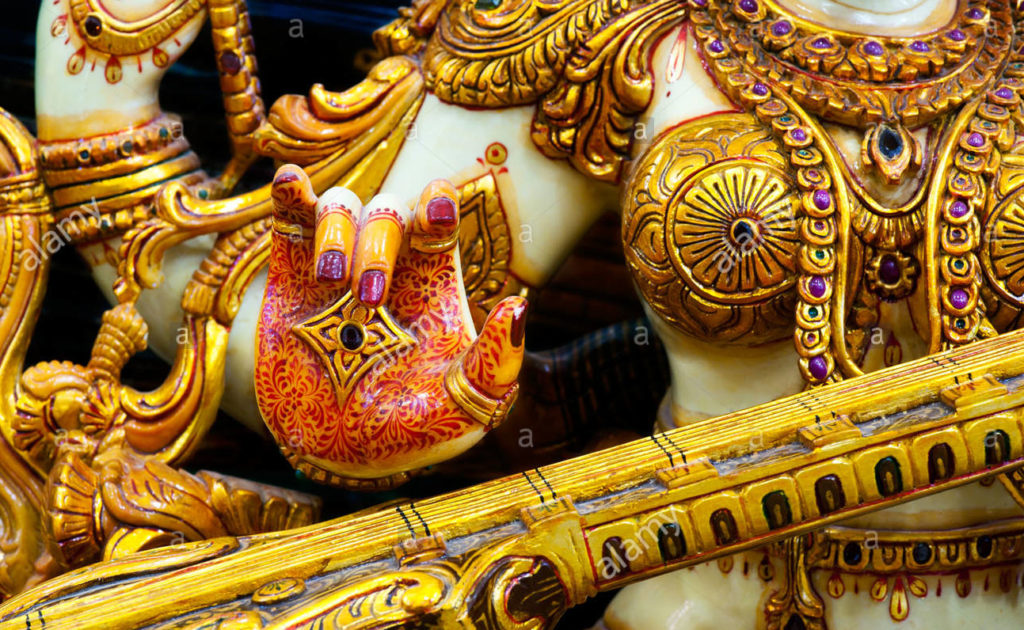
How do Hindu Gods & Goddesses Compare with Dalit-Bahujan’s Gods & Goddesses
How do Hindu Goddesses like Lakshmi, Saraswati, Parvati, Durga compare with Dalitbahujan’s Goddesses like Pochamma, Kattamaisamma, Polimeramma, Yellamma, Mankalamma, Mareamma ?
The cultural, economic and political ethos of the Dalitbahujan Goddesses/Gods is entirely different from Hindu hegemonic Gods and Goddesses. The Dalitbahujan Goddesses/Gods are culturally rooted in production, protection and procreation. They do not distinguish between one section of society and the other, one caste and the other.
In these stories there is no scope for creation of an enemy image. War and violence are not at all central to the philosophical notions of the people. Ritualism is a simple activity which does not involve economic waste. Despite there being such a strong sense of the sacred, Dalitbahujan society never allowed the emergence of a priestly class/caste that is alienated from production and alienates the Goddesses and Gods from the people. There is little or no distance between the Gods and Goddesses and the people. In fact the people hardly depend on these Goddesses/Gods. To whatever extent it exists, and contact is needed, the route between the deity and people is direct. Barriers like language, sloka or mantra are not erected.
How do Hindu Gods and Goddesses compare with Dalitbahujan’s Goddesses/Gods? The Hindu Gods are basically war heroes and mostly from wars conducted against Dalitbahujans in order to create a society where exploitation and inequality are part of the very structure that creates and maintains the caste system.
The Hindus have a male-centered mythology and women are restricted to gender-specific roles and rendered sexual objects.
Though the brahminical Hindus claim that their tradition is rooted in non-violence, the truth is the other way round. All the Hindu Gods were propagators of violent wars. Their dharma is a caste dharma and their living styles, rich and exploitative. Production is made their first enemy. The fact that these Gods are approachable only through a priest and can understand only Sanskrit is enough indication that their alienation from the people is total.
The Dalitbahujans’ Goddesses/Gods tradition is the exact opposite in every respect. It is time that we confront these differences and understand them. It is important that scholars from the Dalitbahujan tradition enter into a debate with brahminical scholars in a big way. These brahminical scholars and leaders who talk about Hindutva being the religion of all castes must realize that the Scheduled Castes, Other Backward Classes, and Scheduled Tribes of this country have nothing in common with the Hindus. For centuries, even when Dalitbahujans tried to unite all castes, the Brahmins, the Baniyas and the Kshatriyas opposed the effort. Even today, no Brahmin adopts the names of our Goddesses/Gods; even today, they do not understand that the Dalitbahujans have a much more humane and egalitarian tradition and culture than the Hindu tradition and culture. Even today, our cultural tradition is being treated as meritless. If the Brahmins, the Baniyas, the Kshatriyas and the neo-Kshatriyas of this country want unity among diversity, they should join us and look to Dalitization, not Hinduization.
(Excerpts from ‘Why I am not Hindu’ by Prof Kancha Ilaiah.)




Reformation is required if hinduism has to be saved just as the reformation initiated by Martin Luther. He challenged the mighty powerful Catholic church. and thus we see how quickly changes took place for the betterment of humanity .He questioned the mediation of the preists between god and man..etc. Only priests were authorized to read and interpret the scriptures, indulgences etc.etc. they controlledhad the monopoly over spiritual, as well as, the material life of the people ….eventually the separation of the church and the state followed.The dark ages ended and rationalism began…the scriptures were massively printed freely distributed to people….inventions occurred…. who doesnt benefit from atleast any one or all of Laws of ..Isaac newton. Well, there’s a claim that all invention were stolen from the India/vedas. LOL.. Perhaps Isaac Newton travelled to india secretly and first studied sanskrit then he plagiarized the as Newton’s Third law of motion..sometime during 1700s .He still did a favour, if he did steal his theories, i would say, if its the case then atleast he shared it with others so that humanity benefits from the discovery.Universal education was brought in by the british in India , prior to that, from what one understands, as the bahujans/ asuras were deprived from education , each gurukul had a guru, he shared his knowledge with his disciples, but he shared not 100% of what he knew but only 75% , because he wanted to remain the guru for life and even after death in order to be revered and worshiped, and interestingly enough when the disciples themselves became gurus they did the same. eventually in every educational cycle the total and collective knowledge didnt grow..but rather decreased if not stagnate.